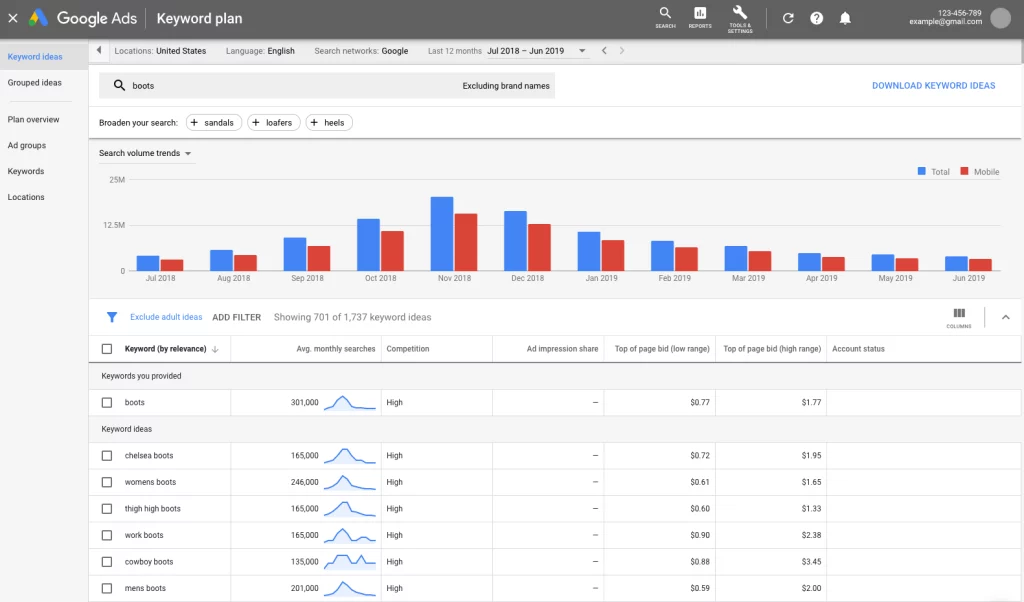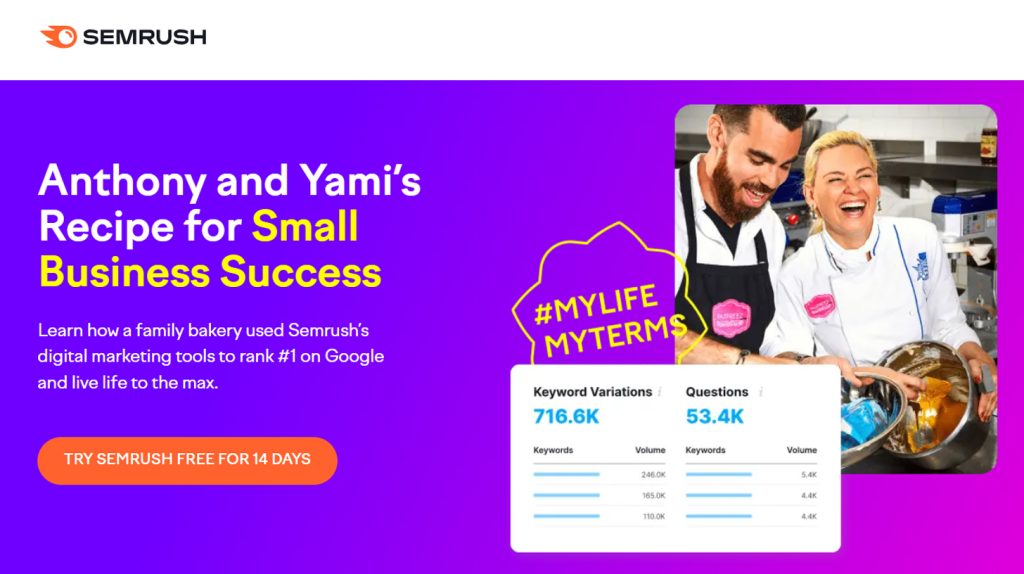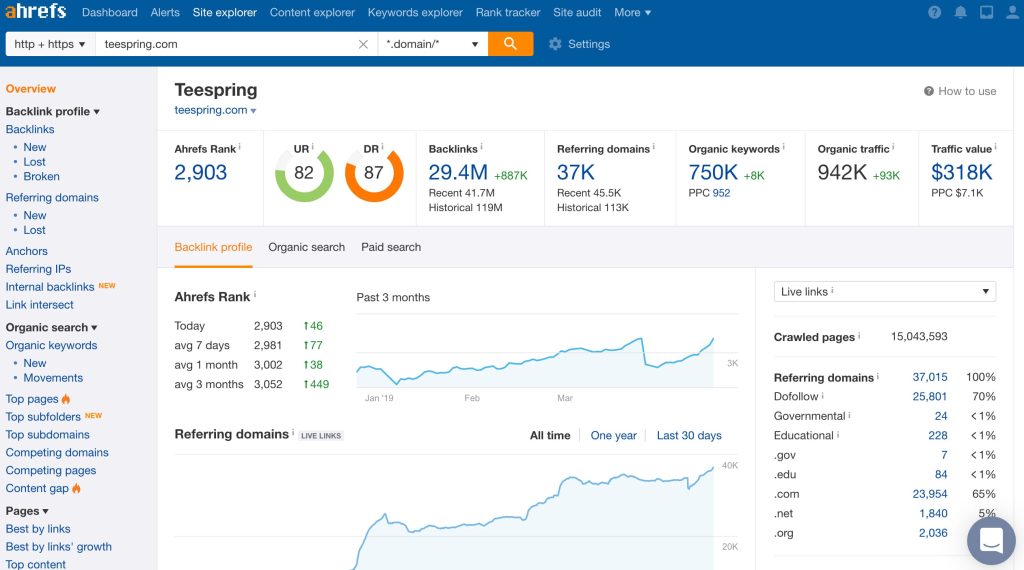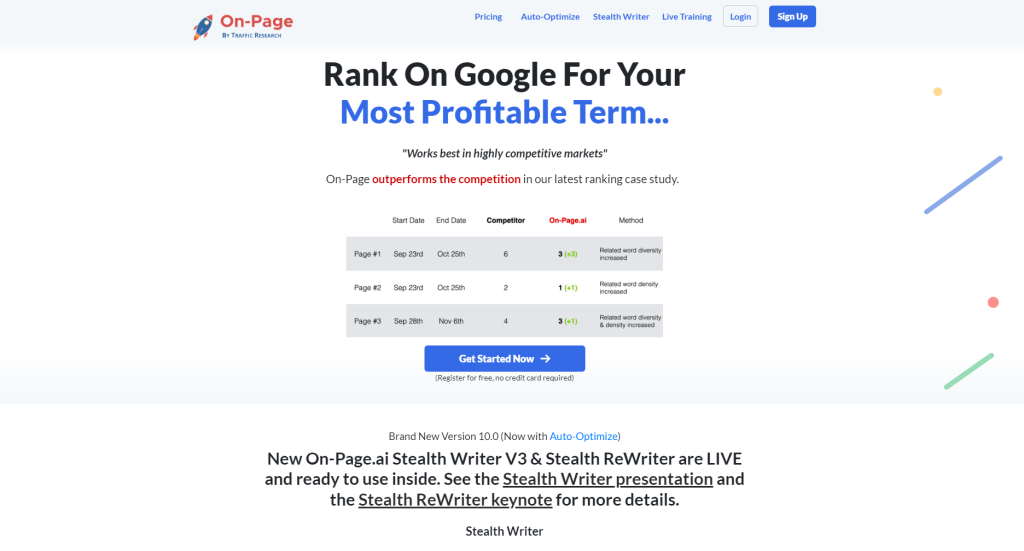
Are you ready to skyrocket your website’s organic traffic and stake your claim in the highly competitive world of search? Gaining visibility in search engines starts with one critical task – keyword research. Intrigued by how something so simple could propel your site to new heights? In this blog post, we’ll reveal the secrets behind unlocking your SEO potential with effective keyword research. Stay tuned; success is just a few keystrokes away!
Keyword research is the process of identifying and analyzing specific search terms that people use on search engines. It helps businesses understand what topics their target audience cares about, what words they use to find information or products online, and how to create valuable content that matches their needs. By conducting effective keyword research, businesses can improve their website’s ranking on search engine results pages (SERPs) and drive targeted traffic to their site, resulting in increased sales, leads, and revenue.
The Power of Keyword Research
Keyword research is the foundation of every content strategy and SEO campaign. It is a crucial step in understanding your audience, their needs, and how they search for information online. The power of keyword research lies in its ability to uncover valuable insights that can inform all aspects of your marketing efforts.
For instance, consider a business that sells organic dog food. With keyword research, you can identify the most commonly searched terms related to dog food, and create content optimized around those keywords. Not only does this increase your visibility on search engines, but it also shows that your content is addressing the topics and concerns that matter most to your target audience.
Beyond just improving visibility, keyword research can also help you uncover marketing trends and opportunities. By analyzing search volume and competition for specific words or phrases, you can identify emerging trends in your industry or identify gaps in the market that you can exploit.
Let’s take the example of a company that sells natural cosmetics. In addition to targeting high-volume keywords related to their product offerings, they could also use keyword research to identify rising trends in the cosmetics industry: perhaps searches for vegan skincare products or cruelty-free makeup are on the rise. By creating content around these topics, this business could capture a growing share of organic traffic from customers interested in these types of products.
Of course, there are different approaches to conducting keyword research, and debate persists among SEO experts as to what methods provide the best results. Some argue for focusing solely on search volume, while others prioritize long-tail keywords with lower competition. Ultimately, the best approach will depend on your specific goals and target audience.
In many ways, keyword research is like panning for gold. Just as prospectors sift through dirt and gravel looking for nuggets of precious metal, digital marketers sift through search data looking for the most valuable keywords. Just as not every rock will yield gold in a stream, not every keyword will be a winner in terms of generating traffic or conversions. It takes patience and persistence to find the right keywords that will drive your business forward.
Uncovering Marketing Trends
One of the most powerful aspects of keyword research for SEO is its ability to reveal emerging trends in your industry or market. By analyzing search volume and competition for specific terms over time, you can identify patterns and shifts in consumer behavior that you may be able to take advantage of.
For example, suppose you run a car dealership. Through your keyword research, you notice an uptick in searches related to electric vehicles (EVs) over the past year. Digging deeper, you see that many of these searches are from consumers interested in learning more about EVs and their benefits. Armed with this information, you might decide to launch targeted campaigns highlighting the benefits of EVs, such as lower maintenance costs and reduced carbon emissions.
By identifying trends early on through keyword research, you can stay ahead of the curve when it comes to developing content and strategies that resonate with your target audience.
Of course, uncovering marketing trends through keyword research is not foolproof. Just because a particular search term is trending upward does not necessarily mean it will translate into increased traffic or conversions for your business. There are many factors at play in determining whether a particular keyword or topic will resonate with your specific audience.
Think of it like surfing: just as surfers watch for incoming waves and position themselves to catch them at the right moment, digital marketers watch for emerging trends and position themselves to ride the wave of interest before it crashes onto shore.
Conducting Effective Keyword Research

Keyword research is the foundation of any effective SEO and content marketing strategy. It involves identifying the most relevant keywords that target audiences use to search for products or services similar to yours. By understanding what your audience is looking for, you can tailor your content around those specific keywords and attract more traffic to your website. Here are some tips on how to conduct effective keyword research:
Start by brainstorming potential keywords and topics related to your business. Think about what words or phrases your customers might search for when looking for products or services similar to yours. You can use tools like Google Search Console or Google Ads’ Keyword Planner to help generate a list of potential keywords.

Once you have generated a list of possible keywords, it’s important to evaluate their relevance and popularity using metrics like search volume and competition levels. Search volume refers to the number of times a particular keyword is searched per month, while competition level refers to how difficult it is to rank for that keyword based on the number of other websites competing for it.
Some may argue that focusing too much on search volume could lead to targeting highly competitive keywords that may not be feasible for smaller businesses with limited resources. However, it’s important to strike a balance between high search volume and low competition levels for optimal results.
The next section will cover some recommended tools that can help you discover potential keywords and analyze their metrics effectively.
Tools for Discovering Potential Keywords
While conducting keyword research manually can be time-consuming and inefficient, there are various effective tools available that can help streamline the process. Let’s take a look at some popular tools used by marketers:
- Google Keyword Planner: This free tool from Google provides keyword ideas based on terms relevant to your business and offers insights on their search volume, competition level, and estimated bid prices. Keyword Planner can also help you identify new groups of keywords, based on the search phrases people use and the products and services related to your business.
- Semrush: Think of it as a virtual spy for your competitors’ SEO tactics. It allows you to analyze your competitors’ keywords, ranking pages, and backlinks, while also providing keyword ideas based on their website content. With the ability to track up to ten of your competitors in one dashboard, their comprehensive keyword research tool covers different industries and geographic locations around the world.

- Ahrefs: This SEO tool is known for its link-building features but also offers an effective keyword research tool that can help identify relevant keywords and estimate their difficulty score, which correlates to how hard it would be to rank for them. You can use Ahrefs’ tool in combination with Google Search Console and Google Keyword Planner to identify high-volume keywords with low competition levels.

While these are just a few examples of tools available, finding which ones provide metrics applicable to your industry and budget will assist in making decisions when planning out your SEO strategy. By having the right tools readily available, you’re guaranteed to have proper insight into what must be accomplished in order for SEO success.
Using the right tools alongside an efficient and comprehensive strategy will lead you toward achieving goals such as increasing organic traffic, ranking higher on SERPs, ultimately driving better revenue results for your company through successful digital campaigns.
Analyzing Keyword Metrics
When conducting keyword research, it’s important not only to identify potential keywords that could drive traffic to your website but also to analyze their metrics. This step is crucial in determining which keywords are worth targeting and which ones would be a waste of resources. There are several metrics to consider when analyzing keywords.
One metric to pay attention to is search volume. Search volume refers to the number of times a particular keyword is being searched for on search engines like Google within a specified period, usually monthly. A high search volume means that many people are searching for that keyword, making it a potentially valuable keyword to target. However, a high search volume doesn’t always mean more traffic or leads – if the competition is too high or the keyword doesn’t align with your business goals, it may not be worth pursuing.
Another important metric is keyword difficulty or competition. Keyword difficulty assesses how difficult it would be for your website to rank on the first page of Google for that particular keyword. The higher the competition, the harder it will be to rank organically without investing in paid advertising. Tools like On-Page.ai can help you understand and analyze this metric.

While search volume and keyword difficulty are undoubtedly crucial metrics, there are other factors you should consider when analyzing keywords. One of them is relevance – an important factor in attracting high-quality traffic that converts into leads and sales. High-volume keywords may be tempting targets but they often fail to capture user intent because they’re too generic.
Think of it this way: imagine you’re searching for “shoes” online. You could be looking for dress shoes, athletic shoes, boots for hiking – any type of shoe. If a website has optimized for “shoes,” you might click on that link but if the page doesn’t offer what you’re looking for, you’ll likely bounce off the site quickly. That’s why it’s important to analyze keyword relevance and make sure that you’re targeting keywords that align with your business goals and serve the user’s intent.
Now that we’ve discussed metrics to consider when analyzing potential keywords, let’s dive into another important metric: search volume and competition.
Search Volume and Competition

Search volume refers to how many times a specific query is searched in search engines over a period of time. This metric can help you identify trending topics or seasonal interests. For instance, if you’re running a holiday special on your website, researching keywords associated with that particular occasion can lead to increased traffic and revenue.
On the other hand, high search volume doesn’t necessarily guarantee success – you might not get the traffic or results you expect depending on how crowded the space is. That’s where competition comes in, which indicates how difficult it will be for your website or content to rank for this keyword. You should aim for medium or low competition keywords rather than short-tail high competition keywords if you want better ranking results.
In general, higher search volume always seems more appealing because it has more potential for attracting traffic compared to lower search volume keywords. However, a higher search volume means a highly competitive market that may not reap organizational benefits because getting to the top ranks on Google is very difficult. From an SEO perspective, focusing on low-competition long-tail keywords will bring far more benefits like higher conversion rates and visitors who are genuinely interested in what your website offers.
While aiming for low-competition long-tail keywords might seem like the best way forward, there are situations where high-volume but high-competition keywords can prove useful. Highly competitive keywords indicate a bigger market that attracts sellers and consumers alike; this means that if successful, ranking for them can be highly beneficial. Ideally, including some short-tail high-competition keywords in your SEO strategy is a good balance.
It’s often compared to the idea of casting a wide net versus going more specific on an individual target. Though there may be many potential catches with the wider net (high volume), you’ll have much smaller chances of making an actual catch as opposed to focusing your attention and resources on something more specific (low competition).
Now that we’ve covered search volume and competition let’s look at how to implement keywords in your SEO strategy.
Implementing Keywords in Your SEO Strategy

Now that you have conducted effective keyword research, it’s important to implement those keywords into your SEO strategy. Simply knowing the keywords won’t translate to better rankings – you need to use them in a thoughtful way throughout your website.
The first step is to prioritize and organize your keywords based on relevance and search volume. Identify which keywords are most important for your business goals and focus on optimizing content around those terms. It’s also important to consider the searcher’s intent – does the keyword indicate that they’re looking for information, or are they ready to make a purchase? This will help inform the type of content you create.
Once you’ve identified your target keywords, it’s time to start incorporating them into your website. Here are some key areas where you should be using your target keywords:
- Meta titles and descriptions: These are the snippets of text that appear in search results, so it’s important to include relevant keywords here
- Headers: Use header tags (H1, H2, etc.) throughout your content and include targeted keywords in these tags
- Body copy: Of course, don’t forget to include target keywords throughout the main body of your content.
- URLs: Make sure your URLs contain relevant keywords. This not only helps with SEO but makes it clearer what the page is about.
It’s also worth mentioning that using variations of your target keywords can help boost rankings. For example, if your target keyword is “best coffee shops,” including variations like “top-rated cafes” or “coffee houses” can help capture search traffic that might not use those exact words.
Ultimately, the goal is not just to use as many keywords as possible, but rather to ensure that your content is accessible and helpful for users. Crafting high-quality content around targeted search terms is key to improving SEO performance.
Optimizing Content for Targeted Search Terms
Optimizing content for targeted search terms is about more than just sprinkling in a few keywords. It’s about creating comprehensive, well-organized content that addresses the user’s intent behind their search.
For example, if someone searches “how to make pizza dough“, they’re likely looking for a step-by-step guide. You could create a piece of content that includes not only the recipe itself but also tips for kneading the dough and avoiding common mistakes. This type of comprehensive content is more likely to rank highly in search results and provide value to users.
It’s also important to consider how your content fits into the broader story around your target keyword. For instance, if you’re trying to rank for “best tacos in Los Angeles“, it might make sense to create a guide that highlights different taco trucks and restaurants around the city.
Another aspect of optimizing content is ensuring that it’s accessible and easy to read. This means using plenty of line breaks and subheadings, as well as incorporating multimedia like images or videos where appropriate. These elements not only make the content more engaging but also help break up blocks of text so readers can easily scan through the page.
Finally, don’t forget about backlinks – links from other websites pointing to your own pages. Backlinks from reputable sites not only indicate that your site is credible but can also boost search rankings. Consider reaching out to other bloggers or publications in your industry and offering to contribute guest content with a link back to your site.
By focusing on comprehensive, user-friendly content and integrating target keywords strategically throughout your website, you’ll be well on your way to unlocking your SEO potential. Sign up to On-Page.ai and explore its Stealth Writer and Auto-Optimize features and how they can help with your SEO campaign.
Common Questions and Responses
Can keyword research help with content creation and marketing strategies?
Absolutely! Keyword research is essential for all aspects of content creation and marketing strategies. By identifying the popular search terms used by your audience, you can tailor your content to meet their needs and improve your website’s search engine rankings.
According to a study by Ahrefs, 90.63% of pages on the internet get zero traffic from Google. This is largely due to the lack of proper keyword research which leads to irrelevant or low-quality content.
Furthermore, targeting the right keywords helps in creating content that resonates with your target market, increases engagement, and enhances the overall user experience. This results in higher conversion rates and improved ROI for marketing campaigns.
In conclusion, incorporating keyword research into your content creation and marketing strategy is vital in today’s digital landscape. It can help businesses reach their target audience more effectively, increase website traffic, and ultimately improve their bottom line.
How can businesses use keyword research to stay ahead of their competitors?
Keyword research is undoubtedly an essential tool to help businesses stay ahead of their competitors. It includes identifying the right keywords and phrases to use on your website, blog, social media, and other online marketing channels. By doing so, businesses can effectively target customers who are searching for products or services they offer.
One key benefit of keyword research is that it helps identify gaps in the market that your business could fill. Research shows that 15% of all Google searches are brand new each day, which means there is always room for new businesses to enter the market and attract new customers.
Additionally, analyzing and using high-value keywords can boost a business’s search engine rankings. Research suggests that websites that appear on the first page of Google Search results receive 71% of clicks. Therefore, if a business can optimize its website using relevant keywords and phrases, it will increase its chances of appearing on the first page of search results and gaining more traffic.
Furthermore, studying competitors’ keywords enables businesses to keep track of what is working well for other companies in their industry. This knowledge allows businesses to adjust their digital marketing strategies accordingly to stay ahead of their rivals.
In conclusion, keyword research proves beneficial by allowing businesses to identify profitable opportunities in the market, improve their search engine rankings, and stay competitive by keeping up with industry trends and competitors. Therefore, implementing effective keyword research should be a priority for any business looking to succeed in this digital age.
Why is keyword research important for SEO?
Keyword research is foundational for SEO. It is the process of identifying and analyzing the words and phrases that potential customers use to search for a specific product, service, or content on search engines. It helps in creating user-focused content, optimizing web pages for search engines, improving ranking positions, redesigning products/services, and developing marketing strategies.
Keyword research allows you to capture your audience’s interests by understanding how they think and what they want. Without it, your SEO efforts would be like sending out invitations to an event without knowing who to invite.
Ahrefs’ recent study shows that 90.63% of all web pages gets no traffic from Google! That’s shocking, but a clear indication of how crucial keyword research is for website owners. By identifying low-competition keywords, long-tail keywords with high intent, and popular topics that people are searching for, you are in a better position to optimize your website for search engines. This ultimately increases the visibility of your website on SERPs, which translates into more traffic, leads, sales, and brand loyalty.
In summary, keyword research provides invaluable insights into your target users’ needs and behaviors. It ensures that your SEO strategy aligns with what people are searching for in your industry or niche. Don’t sleep on it because it’s one of the most potent tools you have at your disposal as a digital marketer seeking online success.
What are some common mistakes to avoid when conducting keyword research?
Conducting keyword research is a critical process that can significantly impact your website’s search engine rankings. However, if not done correctly, it can lead to several common mistakes that can be detrimental to your efforts. Here are some mistakes you should avoid when conducting keyword research:
- Focusing on high-volume keywords only: While it may seem logical to target high-volume keywords, this approach could be counterproductive. High-volume keywords are often highly competitive, making it harder to rank for them. Instead, aim to target long-tail keywords with relatively lower search volumes but less competition. According to Ahrefs, 92% of all keywords get ten or fewer searches per month.
- Ignoring user intent: Understanding the intent behind a user’s search query should inform the choice of keywords. Keywords should align with what users intend to find when they perform a search query, and failing to consider this factor could negatively impact your website’s relevance to their queries.
- Not considering local SEO: If your business targets a particular location, e.g., a city or country, it’s essential to consider local SEO when choosing keywords. Using geographic terms in your keyword strategy can help improve your visibility in local searches.
- Relying solely on free tools: Free keyword research tools can only take you so far. Investing in premium tools like Ahrefs, Semrush, or Moz can provide more accurate data about keyword volume and competition levels.
In conclusion, avoiding these mistakes when conducting keyword research can set the tone for fruitful results in driving organic traffic and improving search engine rankings for websites and online businesses alike.
What are some tools available to assist with keyword research?
When it comes to keyword research, there are plenty of tools available to assist you in optimizing your website for search engines. Some popular keyword research tools include Google Keyword Planner, Semrush, Ahrefs, and Moz.
Google Keyword Planner is a free tool that allows you to discover new keywords and analyze search volume data for your chosen phrases. With this data, you can determine the most relevant and useful keywords to target in your content.
Semrush, Ahrefs, and Moz are all paid tools that offer more advanced features such as competitor analysis, backlink tracking, and site auditing. These tools provide comprehensive insights into the performance of your website’s keywords and help you identify opportunities for improvement.
In summary, using keyword research tools can significantly impact the success of your SEO efforts by helping you identify the most effective keywords for your content. Whether using a free or paid tool, investing in quality keyword research is worth considering when aiming to improve website traffic and engagement levels.




